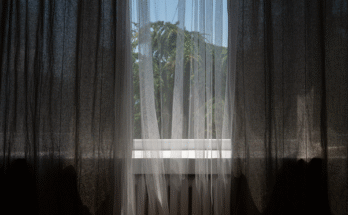Exploring Batik in Singapore offers more than a fabric purchase, it’s a cultural decision tied to heritage, design, and functionality. Whether you’re a seasoned textile buyer or a newcomer intrigued by traditional wear, understanding what to expect from a Batik shop in Singapore ensures you make informed, confident choices. This guide outlines critical points to consider before stepping into the world of Batik, so your buying experience reflects your taste, purpose and respect for its origins.
1. Understand What Batik Actually Is
Batik isn’t just about vibrant patterns, it’s a centuries-old technique involving wax-resist dyeing, typically done by hand. Singaporean Batik shops usually offer both hand-drawn (tulis) and stamped (cap) varieties. Each piece tells a story, with motifs often tied to regional history, beliefs or social status. Knowing the method behind the art form helps you appreciate the time, skill and cost involved. Without this context, it’s easy to mistake a printed imitation for authentic Batik.
2. Quality Differs Greatly, Look Beyond the Surface
Not all Batik are created equally. In Singapore, shops stock everything from mass-produced prints to artisan-crafted clothes. Pay attention to fabric quality, dye consistency and motif alignment. Genuine hand-drawn Batik tends to show slight imperfections, signs of the human touch, not flaws. If the colours appear overly uniform or the lines look mechanical, it’s likely a printed replica. Be wary of paying artisan prices for machine-made goods.
3. Origin and Ethos Matter
Many Batik fabrics sold in Singapore originate from Indonesia or Malaysia. Shops that disclose their sourcing clearly tend to show greater transparency and ethical responsibility. Ask about where the fabric comes from, who makes it, and how artisans are supported. Ethical sourcing not only ensures better quality but also supports communities that sustain this heritage craft.
4. Customisation Isn’t Always Standard Practice
While some assume every Batik shop in Singapore offers tailored pieces or custom prints, that’s not always the case. Many specialise in ready-to-wear garments or pre-cut fabric lengths. If you require something specific, such as a family outfit for a wedding or a corporate Batik shirt, confirm early whether custom services are available, and expect a longer lead time.
5. Batik Is Not Just For Festive Wear
Although Batik often appears during events like Hari Raya or National Day, its use extends far beyond ceremonial occasions. Modern Batik designs have evolved to suit daily wear, workwear and even interior décor. Singapore’s more contemporary Batik shops now cater to younger buyers seeking subtle, wearable patterns. Look for pieces that reflect this shift, especially if you’re aiming for versatility.
6. Prices Reflect More Than Just Fabric
When evaluating price tags in a Batik shop, remember you’re not just paying for fabric. The price covers design originality, dye quality, labour, and sometimes import duties. Be cautious of unusually cheap options, they may compromise on quality or origin. It’s better to invest in one well-crafted piece than to collect multiple low-grade prints that fade or shrink.
7. Sizing Standards May Vary Widely
Sizing isn’t always consistent across shops, especially for hand-sewn or artisan-made garments. Always try on or measure before purchase. In cases where sizing is general (like S, M, L), check for flexibility in the cut. Batik shirts or dresses with side slits, adjustable ties or elasticised panels tend to accommodate better fits across different body types.
8. Cultural Sensitivity Should Guide Your Choices
Some Batik motifs carry symbolic meaning or are reserved for particular events or status groups. While this may not be strictly enforced in a commercial setting, it’s important to ask and avoid wearing motifs with sacred or royal connotations if you’re unsure. Staff in most Singaporean Batik shops can guide you through appropriate selections for weddings, corporate events or gifts.
9. Not Every Shop Will Offer the Same Expertise
From high-end boutiques to market stalls, the experience across Batik shops in Singapore can vary sharply. Some specialise in heritage curation, while others focus on trendy adaptations. Don’t assume all vendors can explain their fabrics in depth. Seek out shops that show a deep understanding of their collection and can walk you through care instructions, cultural significance and styling options.
10. Know How to Care for It Properly
Batik care involves more than tossing it into the wash. Natural dyes can bleed, and some fabrics lose shape when machine-dried. Always check for care labels. When in doubt, hand washing in cold water is a safer bet. Air drying keeps the integrity of the fabric intact, while harsh detergents and heat should be avoided.
A visit to a Batik shop in Singapore opens up a nuanced world of art, history and fashion. However, the experience can quickly feel overwhelming without the right knowledge. Contact Anmako Singapore to guide you through a refined buying process for those seeking expert advice and ethically sourced Batik.




